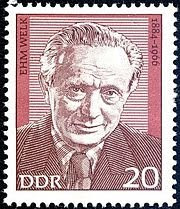The idea is evident: A page X that links to pages Y1, Y2, ..., Yn lets each of those n pages profit from the PageRank PR(X) of X to the same extent. To put it simple: Each page Yi inherits PageRank PR(X)/n from page X. The consequence: the more pages Yi one page X links to, the less those pages Yi profit from the PageRank of X. There is (or should I say: there was?!) one exception: Links that are marked with rel="nofollow" are not part of this game; they do not get a piece of the action. That means when X is linking to n pages Y1, Y2, ..., Yn while only two of these links are not marked with rel="nofollow" then those two pages inherit PageRank PR(X)/2 (which is pretty much more than PR(X)/n when n is pretty much larger than 2) from page X.
In other words: PageRank sculpting with nofollow just means: Let the PageRank only flow to important pages of your website, stop the flow to unimportant pages by using nofollow.
But Google changed the rules. At least this is what they pretend to have done.
Google's "government spokesman" Matt Cutts wrote in his blog about PageRank sculpting: "So what happens when you have a page with 'ten PageRank points' and ten outgoing links, and five of those links are nofollowed? [...] Originally, the five links without nofollow would have flowed two points of PageRank each (in essence, the nofollowed links didn't count toward the denominator when dividing PageRank by the outdegree of the page). More than a year ago, Google changed how the PageRank flows so that the five links without nofollow would flow one point of PageRank each."
In other words, Google tells the SEO community clearly: Forget about PageRank sculpting by using nofollow to mark unimportant links! It won’t have any positive effect on the PageRank of the pages of your website anyway.
Although this advice is very clear, Google's motivation for this change remains unclear at first sight. Why should Google ignore clever piece of advice from the website owners concerning relevance of pages? Why should the fact that links to unimportant pages like Imprint, Terms of Use and Privacy Policy are placed on a page result in less PageRank flow to the important pages linked from the respective page?
The answer is both astonishing and simple: Google has not changed the algorithms concerning PageRank flow with respect to nofollow at all!
If this is true, why is Matt Cutts talking about Google having changed the way nofollow is handled at all? The answer to this second question again is simple: Google wants to discourage you to use the attribute rel="nofollow" to optimize PageRank flow of your website, because Google does not trust you enough to use nofollow in a way that does not mess with Google's business.
What does it mean to mess with Google's business? Matt Cutts explains it himself in the aforementioned blog post: "[...] some crawl/indexing/quality folks noticed some sites that attempted to change how PageRank flowed within their sites, but those sites ended up excluding sections of their site that had high-quality information (e.g. user forums)."
Do you get the point? From the perspective of a search engine like Google there is nothing worse you could do than hiding high-quality information from it. And Google is worrying about you hiding high-quality content from it accidentally while experimenting with nofollow to sculpture PageRank flow within your website.
You want more evidence? Here you go:
- In Webmasters Help Google still confirms: "Here are some cases in which you might want to consider using nofollow: [...] Using nofollow [...] enables Googlebot to crawl other pages you'd prefer to see in Google's index."
- A website that has been optimized for PageRank flow using the attribute rel="nofollow" will use a significant number of nofollow links. In consequence the pages that are linked to without nofollow should have gotten a significantly higher portion of the PageRank flow before Google’s change concerning computation of PageRank flow than they would get today. Since PageRank flow is still a valid explanatory model for understanding how Google ranks web pages, this in turn would mean that the change should have had a significant impact. If the effect would have been significant, SEO experts would have noticed. But they have not, as Matt Cutts himself points out: "At first, we figured that site owners or people running tests would notice, but they didn't."
What is the consequence?
You can and should still use the attribute rel="nofollow" to sculpture PageRank flow on your website! Although this is definitely not the most important SEO technique, it will still have an impact on the ranking of your web pages when applied correctly.
